Millions of sheep populate the island of Ireland – many more sheep than inhabitants. So much wool needs to be processed – as it has been here in Avoca, for example, since 1723…
Page Contents (click line to jump the text)

Intro
Avoca Woollen Mills or Avoca Handweavers is located in the Wicklow Mountains, south of Dublin. The small village of Avoca is easy to reach as a day trip from Dublin, or you can include it as a stopover on your round trip to Ireland’s south-east.
The village of Avoca is located directly on the River Avoca, which meanders through the hilly landscape surrounded by woods and meadows. Wine small, old bridge leads you across the river into the village.
The Avoca Mills were water mills, the river provided the water power for the mill wheels. Today, electricity does the work.
The entrance to the mill is easy to miss, despite the signs, as the mill nestles into its surroundings.
Old, whitewashed cottages and a small factory building behind it tell you that you’ve come to the right place. And, of course, a sign stating that Avova Handweavers has been in existence since 1723, making it the oldest woollen mill in Ireland.
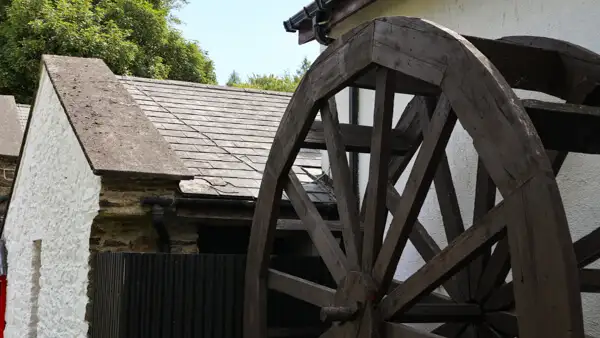
On the right-hand side you will find a pretty shop selling woollen products, clothing and various gift items. Attached to the shop is also a café-restaurant with all kinds of treats for lunch, or coffee and cake afterwards.
The actual manufactory is on the left-hand side. There are regular guided tours, which I would highly recommend. We’ve been on two tours ourselves and it’s really nice to see the old tailoring workshop, the old photos of how people used to work here and the old wool processing machines.
The real highlight, however, is that wool is still spun and woven here today. The whole process of wool processing is explained to you, from shearing the sheep to the garment, and you can see the individual work steps in action.
And after a tour, the cake in the café definitely tastes great!
By the way, we live nearby (second home); we are originally from Germany. On the southern edge of the beautiful Wicklow Mountains, we run our motorbike rental business (https://easycruiser.tours) and our guest rooms during the summer months. We have travelled the Irish island several times and intensively and therefore know it well.
Some background of Avoca Mills
The year 1723 is considered certain, but the first woollen mill here probably existed earlier. A watermill was built on the banks of the River Avoca as a co-operative of sheep farmers from the surrounding area, who washed, spun and wove their wool together here.
The first mechanical looms were introduced around 1760. They were competition for the hand looms and weavers, who feared losing their jobs to the machines, burned some of the machines. Incidentally, this happened in many European countries at around the same time. There were also weavers’ revolts in Germany. Industrialisation displaced manual labour and workers resisted it, sometimes violently.
Nevertheless, progress made its way. Water power gave way to electricity and today you can mainly see electric looms in Avoca. However, there are still a few hand looms where new workers are trained and individual goods and patterns are produced.
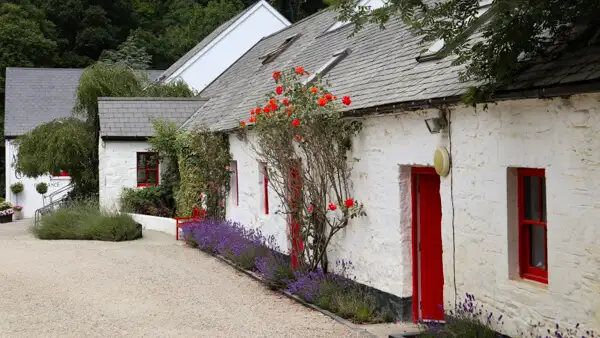
In the 1920s, the mill was taken over by three capable sisters, Emily, Winifred and Veronica Wynne. They introduced the dyeing of wool and the production of high quality tweed fabrics, mainly for export to England, but also supplied Italian designers and manufacturers throughout Europe.
In the 1970s, the Pratt family took over the mill and continued to run it until it was replaced in 2015 by an American investment company, which established several branches in Ireland and added to the café and shop business.
Today, under American management, traditional Irish design and production continues in Avoca.
Visiting Avoca Mills
The mill is located in the Wicklow Mountains, south of Dublin, but on the eastern side. The beautiful coasts and beaches of the south-east coast are very close and easy to reach.
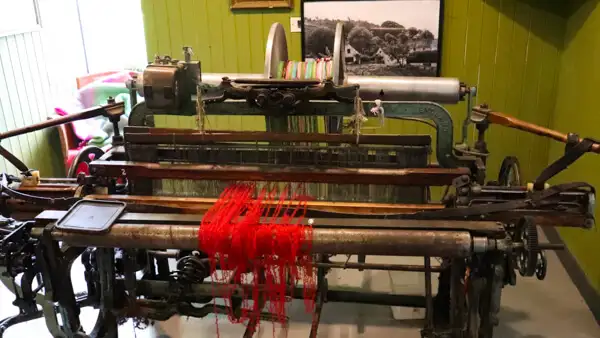
You can combine a visit to Avoca with a tour of the coast, or spend more time in the beautiful Wicklow Mountains and Wicklow Mountain National Park, where the medieval monastery of Glendalough awaits you.
Powerscourt Estate and Powerscourt Waterfall are also not far away and can easily be combined with Avoca. You will also find a shop with Avoca products in Powerscourt House.
The opening times and visitor information for Avoca Village, the woollen mill in Avoca, can be found here: https://www.avoca.com/en/stores-and-cafes/avoca-village.
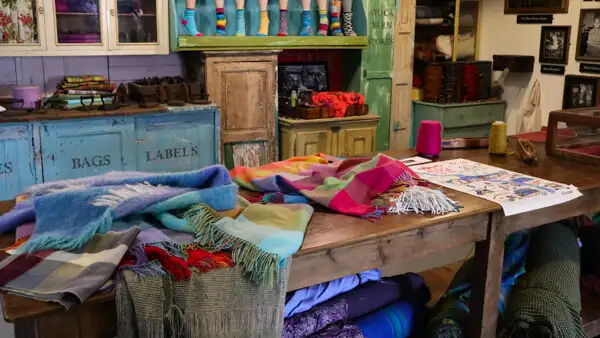
What else you can see in the area
Powerscourt House & Gardens and Powerscourt Waterfall: County Wicklow is known as the Garden of Ireland because there are so many beautiful English manor houses with wonderful gardens and parks. The most impressive of these is Powerscourt, near Dublin. The waterfall belonging to the estate can be found a few kilometres away.
See: https://powerscourt.com
The Glendalough Monastic Site is a monastery from the early Middle Ages, or its relatively well-preserved remains. I’m a big fan of Glendalough: the old monastery with the Celtic crosses is beautiful to see, the typical Irish round tower is great and the valley of the two lakes (Glen-da-Lough) is stunningly beautiful! You can also go hiking here on marked trails. See: https://heritageireland.ie/places-to-visit/glendalough-monastic-site-and-visitor-centre/.
Beautiful beaches can be found here: Britta’s Bay, Old Bawn Beach and Greystones South Beach.
The small town of Wicklow gave the county its name and is an interesting harbour town on the coast. Here you will also find the Wicklow Head Old Lighthouse, which you can book for an overnight stay, and Wicklow Gaol, a former prison and now a museum. See:
https://visitwicklow.ie/attractions-in-wicklow/.
The town of Bray used to be a seaside resort where the rich and beautiful of Dublin liked to spend their free time. Today it is almost a suburb of Dublin. Bray has a beautiful seafront promenade and all sorts of amenities for leisure and dining. See: https://bray.ie/#Home.
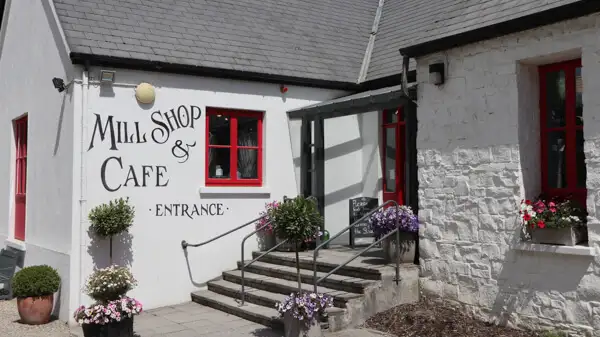
Conclusion
Avoca Handweavers is almost a “Hidden Gem”, a small but nice visitor attraction in the Wicklow Mountains. The beautiful area invites you to hike and Avoca Handweavers invites you to stroll and enjoy.
If you are in the area and are interested in traditional crafts and products made from wool, then a visit to Avoca is definitely worthwhile.
I wish you lots of fun in the Wicklow Mountains and in Avoca!
I have linked some articles here that might also be of interest to you:
More interesting articles for you
POWERSCOURT HOUSE AND GARDENS
GLENDALOUGH MONASTIC CITY – A MUST-SEE-PLACE IN IRELAND’S ANCIENT EAST!
WEXFORD – SO OLD – SO NEW!
HOOK HEAD LIGHTHOUSE – THE OLDEST ACTIVE LIGHTHOUSE IN THE WORLD
Picture credits cover picture: Avoca Woollen Mills, photo: Ulrich Knüppel-Gertberg (www.irland-insider.de, www.ireland-insider.com)